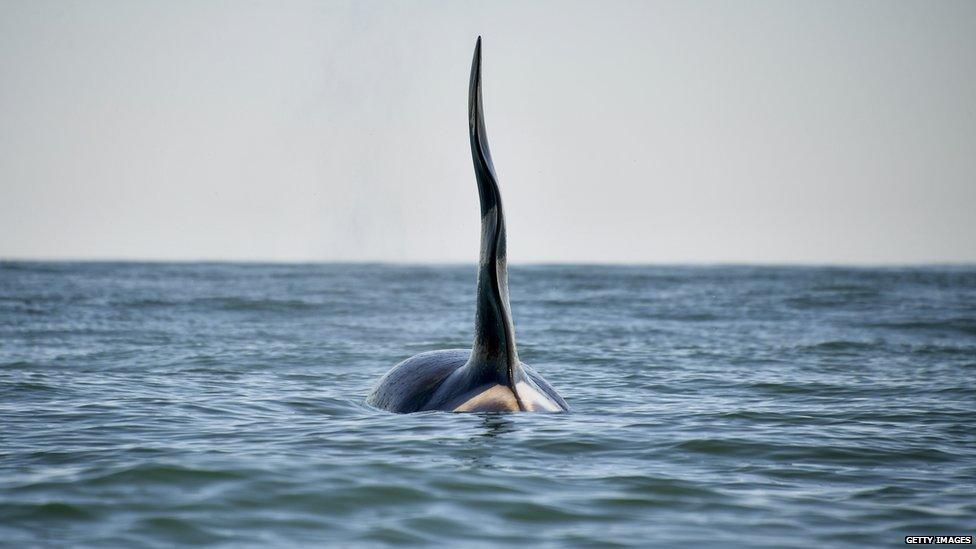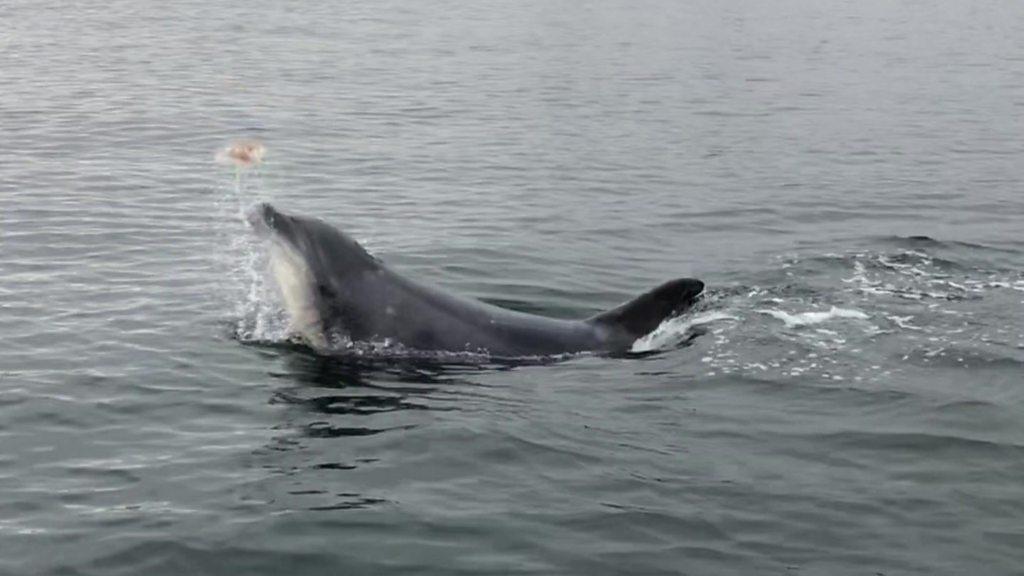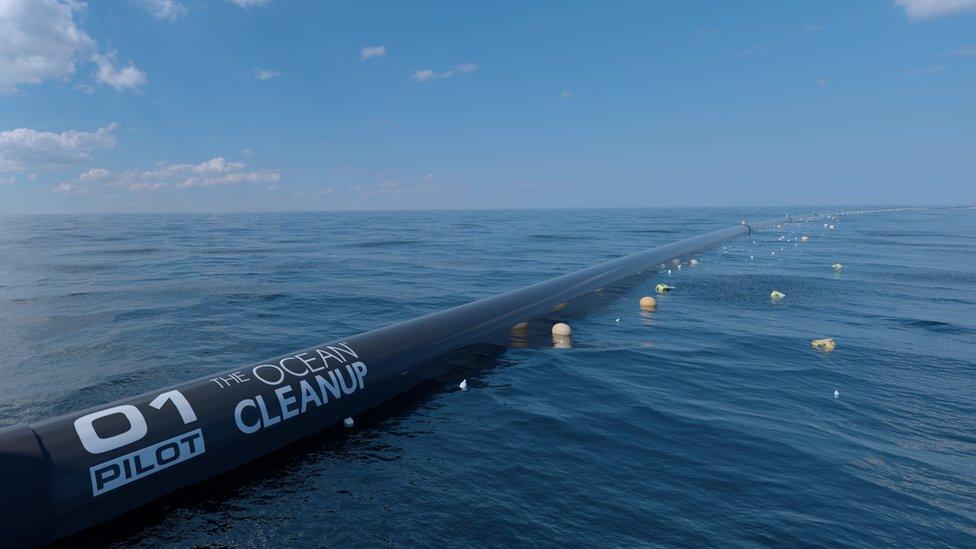Humpback whale spotted in River Thames: How do whales get lost?
- Published
- comments

A humpback whale thought to be up to 10 metres (33ft) in length has been spotted in the River Thames.
British Divers Marine Life Rescue (BDMLR) said it was "definitely a humpback".
Although initially it didn't show any signs of distress, it has since died, possibly because it couldn't find enough food.
The last whale spotted in the Thames was a different type of whale called a beluga whale.
The whale, nicknamed Benny spent three months in there in 2018.
Why do whales get lost?
When whales or dolphins go off course they can end up in rivers like the Thames, or worse they can end up getting stuck on dry land or "beached".
Why do whales get beached?
Marine scientists don't know exactly why this happens but there are some theories.
One theory is that they get sick and are pushed in shore by currents. Whales use sonar to find distant objects and sense their size and shape.
Sonar is making use of an echo.
When an animal like a whale or dolphin makes a noise, it sends sound waves into the environment around it.
The waves bounce off objects and tell the animal how far away it is and what size it is.
Marine mammals use sonar to communicate and find food.
Another reason why marine mammals like dolphins and whales might get lost is because underwater technologies used by ships send out competing sonar signals which can confuse them.
Changes in the environment can also cause whales to behave differently. If sea temperatures rise, food stocks get low or the water is polluted they might change course.
How sound pollution has changed the way dolphins and whales communicate
Sometimes whales or dolphins can make a simple mistake and head in the wrong direction.
Because whales and dolphins travel in groups and are very sociable animals, when one makes a mistake and heads the wrong way, others might follow. This is why sometimes a number of whales can get beached at the same time.
- Published28 September 2018

- Published12 August 2019

- Published15 May 2017

